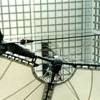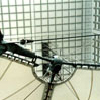This reference is for Processing 2.0+. If you have a previous version, use the reference included with your software. If you see any errors or have suggestions, please let us know. If you prefer a more technical reference, visit the Processing Javadoc.
| Name | loadImage() |
||||
|---|---|---|---|---|---|
| Examples | 
PImage img;
img = loadImage("laDefense.jpg");
image(img, 0, 0);

PImage img;
void setup() {
img = loadImage("laDefense.jpg");
}
void draw() {
image(img, 0, 0);
}

PImage webImg;
void setup() {
String url = "http://processing.org/img/processing_cover";
// Load image from a web server
webImg = loadImage(url, "gif");
}
void draw() {
background(0);
image(webImg, 0, 0);
}
| ||||
| Description |
Loads an image into a variable of type PImage. Four types of images ( .gif, .jpg, .tga, .png) images may be loaded. To load correctly, images must be located in the data directory of the current sketch. In most cases, load all images in setup() to preload them at the start of the program. Loading images inside draw() will reduce the speed of a program. Images cannot be loaded outside setup() unless they're inside a function that's called after setup() has already run. Alternatively, the file maybe be loaded from anywhere on the local computer using an absolute path (something that starts with / on Unix and Linux, or a drive letter on Windows), or the filename parameter can be a URL for a file found on a network. If the file is not available or an error occurs, null will be returned and an error message will be printed to the console. The error message does not halt the program, however the null value may cause a NullPointerException if your code does not check whether the value returned is null. The extension parameter is used to determine the image type in cases where the image filename does not end with a proper extension. Specify the extension as the second parameter to loadImage(), as shown in the third example on this page. Depending on the type of error, a PImage object may still be returned, but the width and height of the image will be set to -1. This happens if bad image data is returned or cannot be decoded properly. Sometimes this happens with image URLs that produce a 403 error or that redirect to a password prompt, because loadImage() will attempt to interpret the HTML as image data. |
||||
| Syntax | loadImage(filename) loadImage(filename, extension) | ||||
| Parameters |
| ||||
| Returns | PImage | ||||
| Related | PImage image() imageMode() background() |
